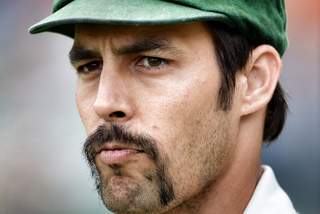New York, New York – it’s the city that’s attracting Australia’s young creatives.
Not so long ago young Australians seeking adventure would grab their backpacks and head to London, pulling beers in pubs and partying their way around Europe. Now a generation of bright young things are finding a new buzz – and career success – in the hustle and bustle of New York. Meet five young women who are chasing their dreams in the Big Apple.
Jess Cohen, 29, moved to New York from Sydney three years ago. She has recently started her own production company – her latest project is producing a music video for Australian pop idol Guy Sebastian. Her company, Coco Collective, is small but “it means I can work with independent artists and make some interesting stuff”.
Cohen jetted off to the USA after working for several years for Andrew Denton’s production company, Zapruder’s Other Films, on television shows such as Hungry Beast and Enough Rope. She says she had unexpected help finding work in New York. “I noticed a sense of opportunity and a sense of positivity from New Yorkers,” she says. “I was surprised with how many people would lend a hand.”
Cohen’s high school friend EJ Barnes – daughter of Aussie rocker Jimmy Barnes – has also settled in New York after years touring the States. She plays music with another child of rock royalty: Liam Finn, son of Crowded House frontman Neil Finn. “I’ve always had a very romantic image of living in New York,” Barnes says. “I feel more free over here than I am in Australia. My family, they’ve saturated the music market as far as ‘Barnes’ is concerned!”
With bands playing in local venues every night, Barnes describes New York as a “creative mecca”. “We’ve got a beautiful studio here looking over Manhattan. Every time we rehearse we’ll go up on the roof and look over at the skyline and it feels kind of magical.”
Even the city’s grittier aspects can be stimulating. “In my family home we have great studio equipment and all the instruments. I love the ease of life there for making music, but I think here the grime of the city seeps into your music.”
Jess agrees. “There’s a misconception about New York being really glamorous but it is really grimy, and that’s where the life is. One of my favourite things to do is getting the subway. It’s the most inspiring place. You can witness a break-up and a proposal and someone inappropriately exposing themselves, all on one ride. Which is amazing.”
New York has plenty of allure for those outside of creative industries. After falling in love with the city while visiting on holiday, Kate Matson moved to the Big Apple in 2007 to work in the financial sector, arriving just before the global financial crisis. “Things were booming. I work in restructuring so it was good timing for me,” she says. “I was working at a client in California on the day Lehman Brothers fell over and Wall Street collapsed, it felt like the whole world changed on that day.”
With the downturn came a lot of work, including big-name clients such as collapsed bookstore behemoth Borders. “When I got the Borders engagement I went up the top of the Empire State Building – and it was like that song ‘New York, New York, if you can make it there you’ll make it anywhere’ – I felt that I had truly made it here.”
Matson is now a director at BDO Consulting at the age of 32. “It’s been a great ride. I work really hard but I’m lucky I’ve been successful so I see the rewards for it.”
A passion for hard work seems a must for Australians in New York – it’s certainly something entertainer Anna Copa Cabanna has in spades. Growing up in a Greek family in the country town of Queanbeyan, Anna always felt a bit of an outsider. “I had a pretty shitty time at school to be sure,” Anna says. “There was a lot of racism towards the Greeks and the Italians that moved there.”
But the hard times only gave Anna a greater urge to succeed. “I became quite strong early on, every time I auditioned for a play, or got dux [of my school] I was like really committed and thought ‘I want that’.”
After going to university in Sydney, Anna moved to New York 11 years ago. “I just had a feeling about New York,” she explains. “Everybody I knew moved to London, and I thought, that’s too easy, let me do something that’s a bit more challenging.”
Anna lost no time getting started. “I started going to open mic nights the first week I was here and did cabaret routines and it went over really well.”
Rock bands like The Strokes were huge at the time and Anna was in demand as a 1960s-style go-go dancer at bars and parties. Despite her success she was keen to work on her own projects. “At some point I thought, I wanted to marry the two; the dancing and the singing. So I thought, why not do a spectacular and have puppets and a prize wheel and male dancers and choreograph big routines? So I put together this ’70s variety show, and I’ve been doing that for seven years.”
Anna believes that while Australia struggles with the tall poppy syndrome, New Yorkers support high-achievers. “There’s something about New York where they want you to succeed.”
Positive feedback is a powerful motivator but Anna recalls one particular highlight. “One time I did a gig and I saw this old hippie walking towards me and he was like, ‘You would be great in my play’, and I was like, ‘Oh right, whatever, what is this play?’ and he was like, ‘Hair’.
“I thought I was going to start crying, it was such validation. If I’m ever having a bad day, I’m like, the guy who wrote Hair thought I was awesome!”
Playwright Alexandra Collier moved to New York in 2006 and admits she was “naively optimistic”. “It was actually a real struggle at the beginning,” she says. “I thought I would move and I would start writing, but of course you need a job, you need finances, you need a solid living situation to start creating anything. Maybe Jack Kerouac didn’t but I think most people do.”
Studying playwriting at Brooklyn College gave Collier an “instant community” and doors started opening. Since then more opportunities have come her way. “I’m working on two projects at the moment. One, called Take Me Home, is a show that’s happening in a taxi. The second project is a musical I’m writing with an Australian composer called Greta Gertler, who wrote the music for The Whitlams’ Blow Up the Pokies song.”
Writing an original rock musical while penning a play set in a taxi makes sense for someone who left Melbourne because she was bored. “I had a good job, I probably could have climbed the ladder but I just wasn’t interested. Maybe there’s some insane part of me that needed to push myself into a terrifying, difficult circumstance to feel like I was fulfilled.”
Maybe there is a little bit of insane courage that is driving these young women to pick up their lives and start again in a strange, wild city. Collier certainly believes you have to scare yourself to push your limits. “I was riding my bike the other night through this slightly sketchy neighbourhood in Brooklyn and there was this little voice inside me saying ‘Are you crazy? Someone’s going to mug you out here!’ and the other part was like, ‘This is awesome!’”


Recent Comments